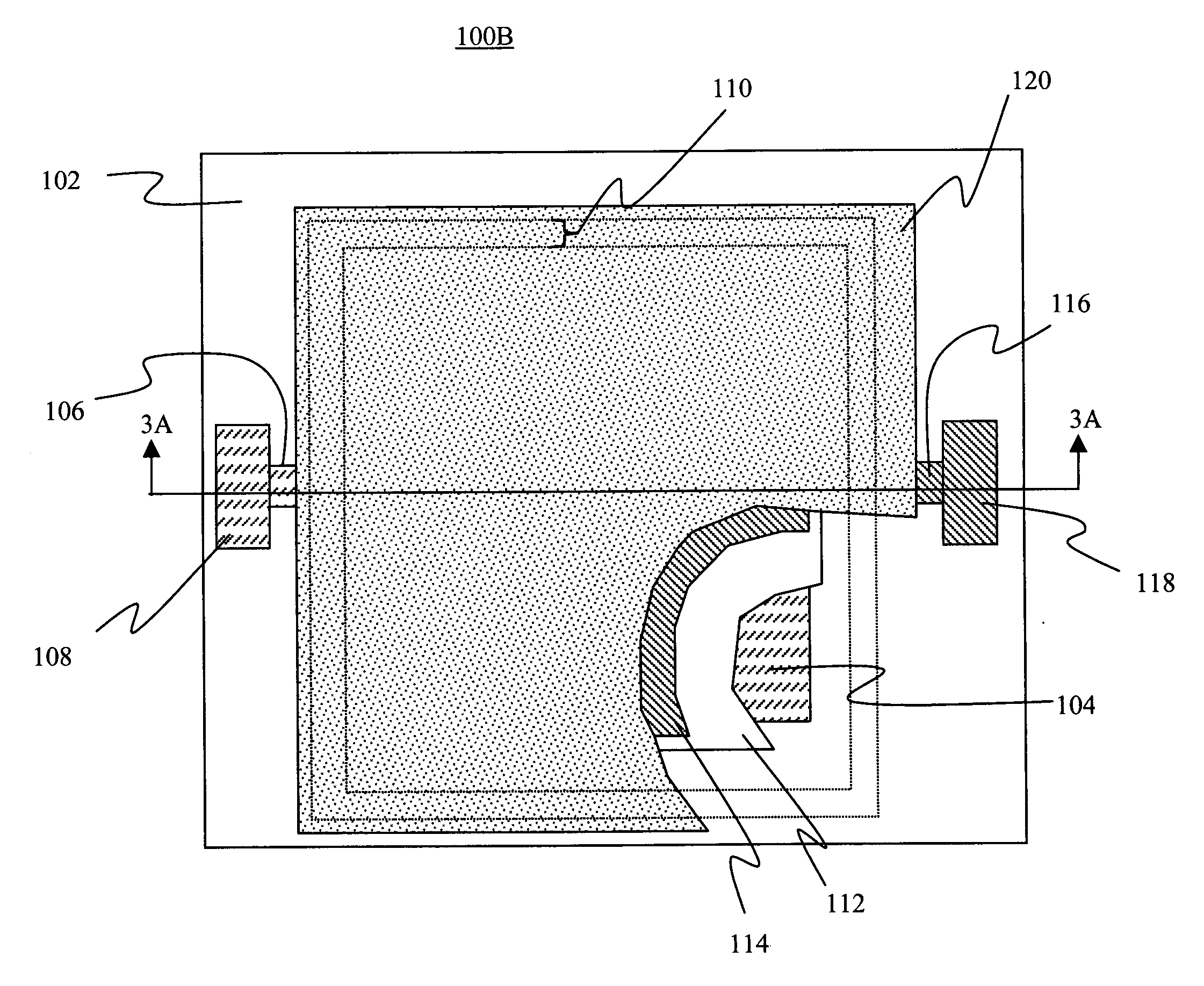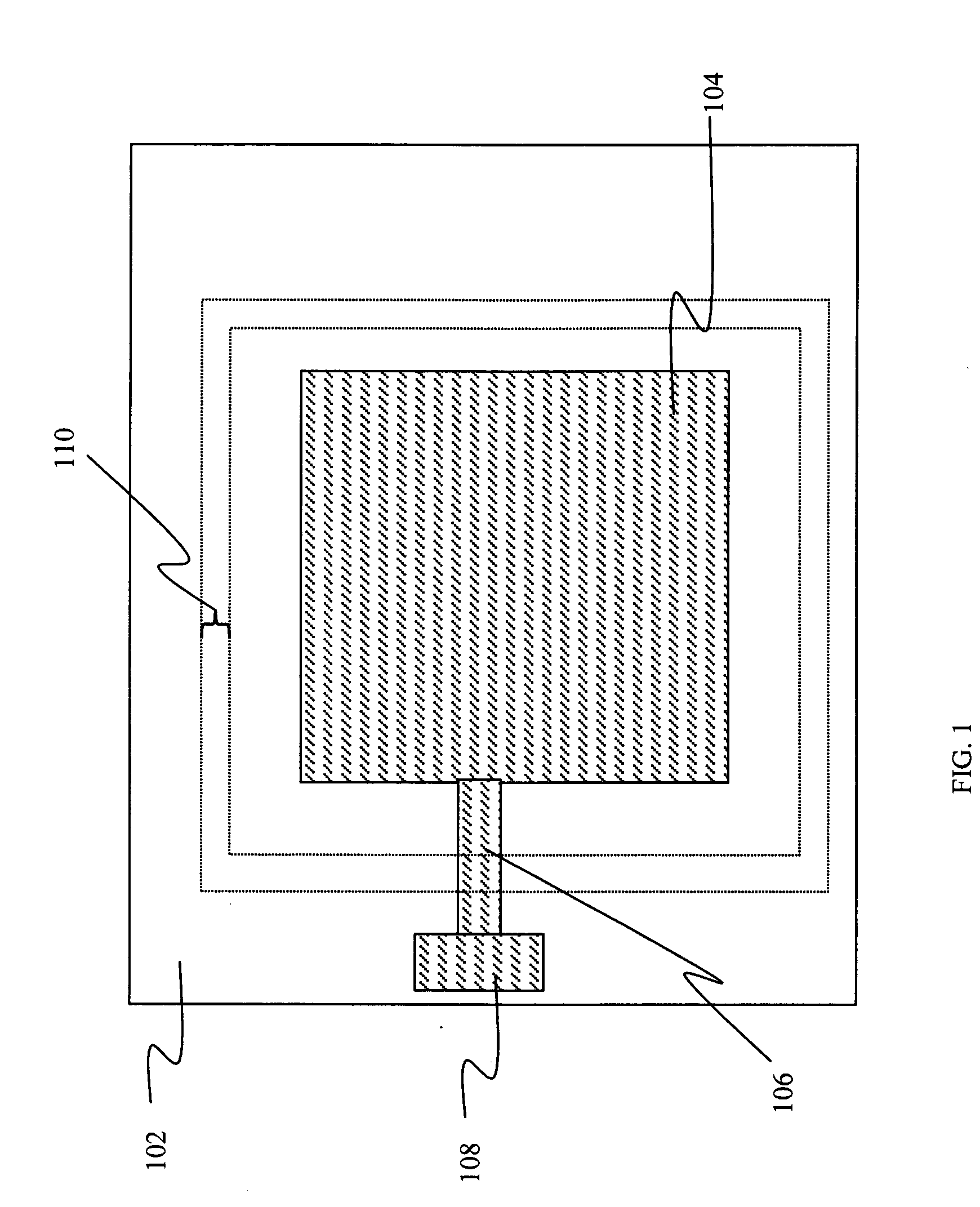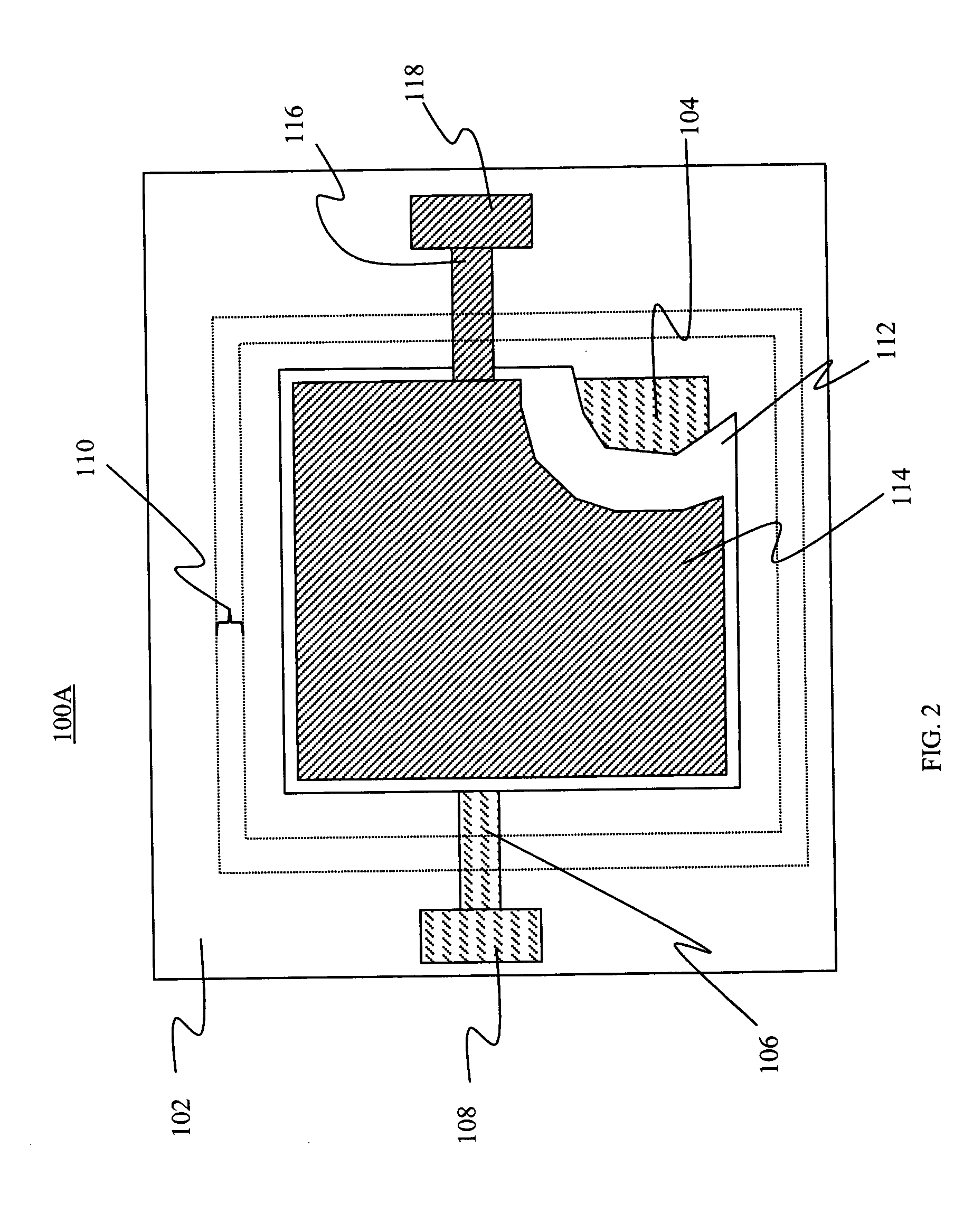Encapsulating OLED devices
a technology of oled devices and encapsulation, which is applied in the direction of discharge tubes/lamp details, discharge tubes luminescnet screens, electric discharge lamps, etc., can solve the problems of unprotected devices being prone to rapid degradation of performance, and unprotected devices being subject to mechanical damage, etc., to achieve excellent protection of electronic devices, increase the bond strength between a cover and a device, and not degrade the electrical properties of devices
- Summary
- Abstract
- Description
- Claims
- Application Information
AI Technical Summary
Benefits of technology
Problems solved by technology
Method used
Image
Examples
examples
[0150] In order to demonstrate the effectiveness of the embodiments and methods of this invention, OLED devices were encapsulated in a manner described herein and were subjected to tests that are customary to display evaluation. Examples of possible assessment criteria include changes in electrical resistance of the display interconnect lines, changes in seal bond strength and moisture permeation into the encapsulate device under certain prolonged environmental conditions. One method to evaluate the level of moisture permeation is to observe the formation of dark spots in the display area. An alternative method to evaluate levels of moisture permeation is to observe the change in optical density of a Ca coating that is deposited onto a portion of the inside surface of a glass cover by means of vapor deposition. If moisture is present inside the space enclosed by the encapsulation, it reacts with the Ca coating forming CaO and reducing the optical density of the patch.
[0151] Measure...
PUM
 Login to View More
Login to View More Abstract
Description
Claims
Application Information
 Login to View More
Login to View More - R&D
- Intellectual Property
- Life Sciences
- Materials
- Tech Scout
- Unparalleled Data Quality
- Higher Quality Content
- 60% Fewer Hallucinations
Browse by: Latest US Patents, China's latest patents, Technical Efficacy Thesaurus, Application Domain, Technology Topic, Popular Technical Reports.
© 2025 PatSnap. All rights reserved.Legal|Privacy policy|Modern Slavery Act Transparency Statement|Sitemap|About US| Contact US: help@patsnap.com



